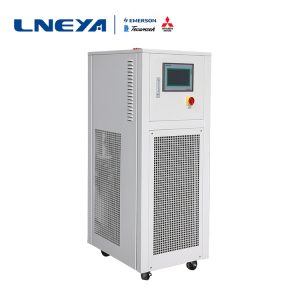battery charging test conditions at different ambient temperatures
At present, the battery is undoubtedly the most core and critical component in electric vehicles. Therefore, both the OEM and the battery factory need to conduct a comprehensive test of the battery. The characteristics of automotive lithium-ion power batteries are greatly affected by ambient temperature. In low temperature environment, the available energy and power attenuation is more serious, because long-term charging in low temperature environment, the life will be greatly shortened.
In the case of -10 degrees, the battery capacity and operating voltage are significantly reduced; in the case of -20 degrees, the discharge capacity decreases sharply, and the specific capacity is only about 30% of that at normal temperature. Charging at low temperatures is also difficult. Metal lithium formed on the surface of the negative electrode is easy to accumulate. Further chemical reactions will cause internal short circuits in the battery, greatly reducing safety. In the measured temperature range, the internal resistance of the battery is higher under low temperature conditions, and the internal resistance becomes lower and lower as the temperature increases. The change of discharge energy is basically opposite to the change of internal resistance.
According to authoritative tests, the battery charging start current in hot cars is higher than cold cars, and the charging current is higher than cold cars, because the charging voltage is significantly higher than cold cars.
In these tests, the accuracy and temperature simulation become a very important factor. LNEYA’s KRY series-battery motor test cooling heating system is a product born for this emerging field. Fully enclosed tube design, high-efficiency plate heat exchanger, used for lifting temperature and constant temperature control in the test of new energy batteries and motors, especially suitable for heat dissipation and heat release process control during the test. With automatic fault protection function, it can output corresponding signals to ensure equipment safety. The main parts are international brands, quality assurance, the surface is treated with high-voltage electrostatic spraying, and auxiliary equipment can be added according to specific needs. It can achieve multi-channel temperature and flow control, one device can achieve multi-channel output, and each channel can control different flows without interfering with each other. Accepting customization requires solutions that control different flows and temperatures simultaneously.
Recomendaciones relacionadas
-
LNEYA se puso a la cabeza de las auditorías en línea en directo
2204Good products come from a strict manufacturing process. In March 2020, LNEYA took the lead in adopting the methods of cloud supervision and factory inspection, focusing on the display of LNEYA refrigeration heating temperature control device, TCU ...
Ver detalles -
Factores que afectan a la capacidad de refrigeración del enfriador del sistema de refrigeración del reactor químico
2226There are various types of chillers, such as air-cooled chillers, water-cooled chillers, etc. But no matter what the chiller is, there are some factors that affect the cooling capacity of the chiller. A cooler is an energy-saving device that is co...
Ver detalles -
La fábrica de enfriadoras de tornillo con ruido debe ser revisada y reparada a tiempo
1514Before we use an industrial screw chiller factory, we will check all aspects of it, such as parts inspection, configuration, noise, and so on. What should I do if there is noise in the screw chiller during use? Do I need someone to repair it? The ...
Ver detalles -
Low temperature industrial freezer fan coil wiring instructions
1648The electric two-way valve red line of the low-temperature industrial freezer is 220V hot wire (L) directly connected to the thermostat fire line interface, the blue line is zero line (N), the coil, the two-way valve, the thermostat is connected i...
Ver detalles
 LNEYA Enfriadoras industriales Fabricante Proveedor
LNEYA Enfriadoras industriales Fabricante Proveedor














